Learn How Professionals Work Smarter and Faster with These Five After Effects Tools
One of the great things about After Effects is the sheer number of scripts and plug-ins available to level up your workflow. So why does it seem that some motion designers have an edge? The truth is, a lot of After Effects Tools end up being a waste of time, computing power, or are just too confusing to be useful.
Professionals know which scripts and plug-ins get the most out of After Effects. Through time and experimentation, they've figured out which tools actually improve their workflow. Wouldn't it be great if you could talk to a professional with years of experience, and they'd just point out the hidden gems?
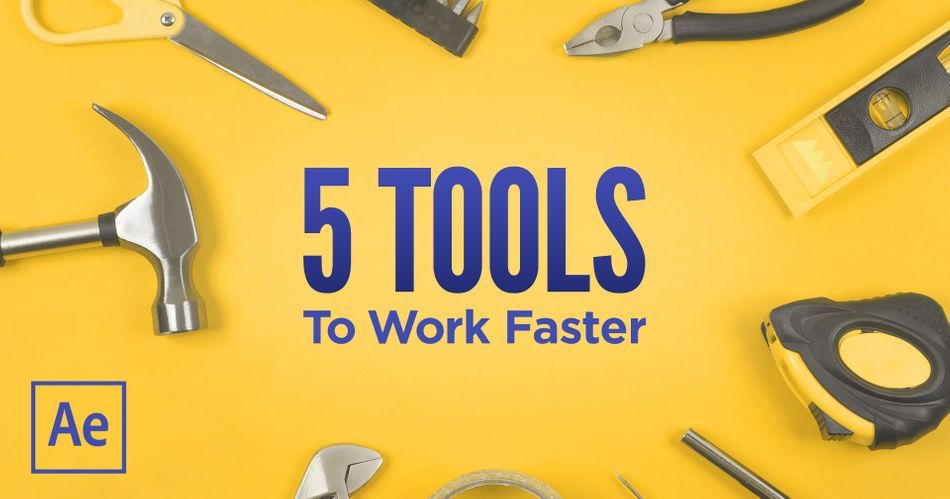
Ryan Summers, a 20-year After Effects veteran, jams his top-of-the-food-chain industry knowledge into a breezy tutorial. But Ryan doesn't just give a list of tools to go download; he shows you how to use them. Honestly, everyone working on this tutorial is heavily acquainted with After Effects, and we all learned something.
Buckle-up butter cup, your brain lid is about to blow its top! Mister Ryan Summers is here to overclock your mind!
5 Amazing Tools for After Effects
Get More Tips from Industry Professionals
Want more awesome information from the top-performing professionals in the industry? We've compiled answers to commonly asked questions from artists you may never get to meet in person and combined them in one freaking sweet book.
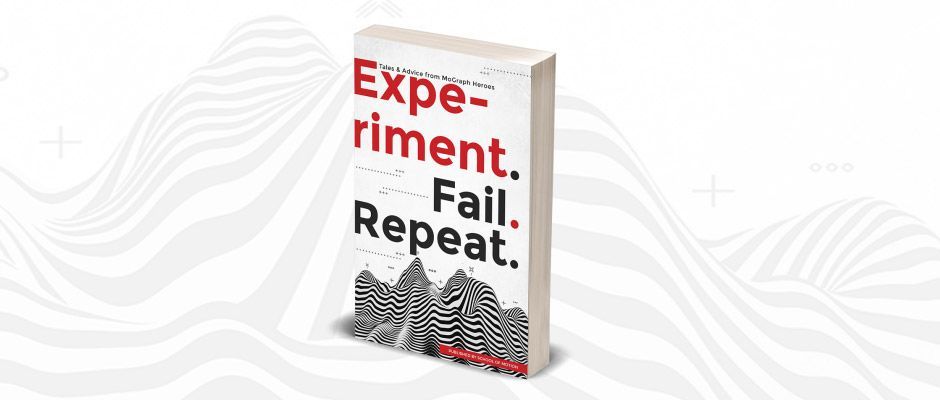
Download Experiment. Fail. Repeat and discover the secrets of the universe! Or, you know, just get encouraged, which ever you most prefer is totally fine.
Some of Our Favorite After Effects Tools
SMART KEYFRAME NAVIGATOR
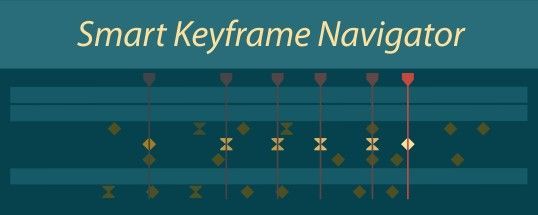
Keyframes are the heart of pretty much everything we do in After Effects – they are everywhere. But navigating them can be challenging sometimes, right? Keyboard shortcuts are handy, but AE makes you spam the J and K keys something fierce. Now, I know what you’re thinking: Why doesn’t AE just predict what I wanna do? Well, slow your roll for a second, that's exactly what Smart Keyframe Navigator does – it lets you move through your Timeline with ease, based on your selections.
DECLUTTER

If you've ever inherited a messy project or looked up one of your own ancient files, chances are it isn't going to be fun to open it now. No folders, no sense of the project flow, no organization – and no idea where to start. Declutter changes all that by quickly creating folder structures and then sorting all of your assets into the right place.
TRUE-COMP DUPLICATOR
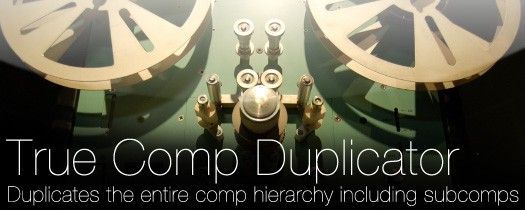
Copying compositions can be tough when you have a deeply-nested hierarchy, or expressions piped between multiple comps. True Comp Duplicator makes a one-button solution, while also keeping everything organized and named for you.
LAZY 2
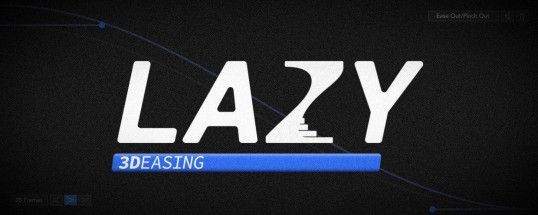
Essentially a staggering-on-steroids script, Lazy 2 takes a fun to use interface that's reminiscent of another popular script for After Effects called Flow, and lets you offset layers and keyframes with ease.
RENDER HOGS

Imagine having proxies for time-consuming Effects. Render Hogs gives you the power of toggling groups of slow-to-render Effects with other quick-to-preview alternatives, saving you tons of time when scrubbing the Timeline—and giving you a quick way to restore those expensive Effects at render time.
Become a Master Crafter
Don't get us wrong, we love using tools to enhance our workflows, but at the end of the day they are just tools. They don't equate to skills, and they often leave you struggling to come up with ideas because you may not know the principles of animation.
If you want to step up your animation game, check out Advance Motion Methods, the pinnacle of motion graphics education.
Registration for the Spring 2020 Session lasts until April 5th at 11:59pm ET! We'll see you in class.
-----------------------------------------------------------------------------------------------------------------------------------
Tutorial Full Transcript Below 👇:
Ryan Summers (00:00): Hi, I'm Ryan Summers. One of the creative directors here at school of motion. And I've been using after effects for almost 20 years and things like title sequences, VFX for feature films. And yes, even Vultron in my time using after effects have come across a lot of tools, but here are five of my favorite that you may not have heard of.
Ryan Summers (00:27): When you start going into third party, plugins and scripts, it can be a really mind-bending experience. So I'm here to show you some of the plugins and scripts you may not have heard of. We're not talking about element 3d or particular or Stardust. Let's take a look at five tools that talk about key frames, compositions, timelines, the project panel, and one tool that'll help you work a lot faster. We know in after effects, the lifeblood of all animation is key frames. And if we watch this, we can see it. There are tons of key frames in here. Let's just say, if we wanted to, we could go in and we want to adjust the left foot. Being able to move back and forth between key frames is pretty straightforward. If you hold on shift, you can snap to key frames as you move their current time indicator back and forth.
Ryan Summers (01:09): And if you hold down alt and you're working with a slower rig or a slow character to compute, that'll keep the interface from refreshing, which allows you to kind of scrub back and forth pretty easily. The nice thing is you can still see the controllers move back and forth. So if I go to another key frame and I'd go with the mouse, the character will update. So that's kind of a fast way to kind of move around with things. But what we really do as animators is we moved back and forth. We flipped, we try one key frame and we go to the other one. We see what the differences. So in after effects, the keyboard shortcut for doing that is J and K. And it's pretty straightforward. It's nice to feel to go back and forth between these, but one thing I've always wondered about was I really want to be able to just bounce back and forth between specific key frames on a specific track of a specific object.
Ryan Summers (01:45): So let's say the left foot and the position it's highlighting all of these keys right now. Wouldn't it be great for after effects for it to know that, you know, what I really want to do is if I hit K I shouldn't go to the next key frame. That's visible. I should be bouncing back and forth to the ones that are selected. So that's where the smart key frame navigator comes in from a script it's really simple. It's two scripts that you install, and then you can apply keyboard shortcuts. I have shift C shift V to go to previous key frame or next key frame. And you saw me going back and forth with J and K and I'll do it again really quickly. Like let's look at how many key presses it is to get to the next key from that I want 1, 2, 3, 3 key frames, but even to get all the way to the end 4, 5, 6, 7, 8, 9, 10, 11, you're spamming the K button or spamming the J button just to get back and forth from the set of key frames that make up your cycle.
Ryan Summers (02:31): Now let's roll back to the beginning and this time I'm going to use shift V and look at that. You can notice if you just watch down here, if I hit shift scene, it just bounces back and forth between the key frames that I have selected. So that makes it really easy to go and flip back and forth between my poses, which is what animating is all about, right? I don't need to see all the breakdowns, but if you think about it, when you're animating, how many times you pressing K and J you can reduce those a ton. Another little great thing about this is that it doesn't have to be just a specific track, but if you're looking at all of these different key frames for all these different controllers, and you want to just focus on things for a layer, let's say, it'll do the same thing. If I hit shift scene, it'll ignore any of the key frames that have happened right here. You'd think it would stop right here, but if it had shifting ignores those, so it's kind of intuitive. That's why the smart and smart key from navigator actually is true. It's smart enough to know what you're looking at. And you reduce the amount of times you have to hit those shortcut keys.
Ryan Summers (03:23): How often have you opened up one of your old files or inherited a file from someone else? And as you scroll through, you realize it's a complete mess, no folders, no naming conventions, no organization, no sense of the project or the flow of the project that's contained within it. Well, what if I told you that there was a script that with the press of one button could not only create folders, but also take your comps pre comps and your assets and put them in the right place. Well, that's what clutter from AA scripts does for you. So let's get into this master comp. I want to see what my flow actually looks like. So there's a really easy way to do that. You can use composition flow chart, and yes, after effects does have a way to view your project. Notably, it's great. It's not necessarily a notable compositor, but you've got to think of it more like it's a nodal organizational tool.
Ryan Summers (04:07): If you think of it that way, and it changed a couple of the presets, it's actually super powerful. Now, if you've done this before, like me, you cook plus, and all of a sudden it feels like there's this rainbow colored spaghetti mess that we just have no idea what to do with it. But if you go to the filters and you actually turn off the footage, solids and layers, as well as the effects, and I like to switch flow direction from top to bottom to right to left. And all of a sudden I have something that mimics a lot of what I do when I've worked in my timelines. I have my main comp and then I have all my pre comps kind of cascading to the right. You can also change it from the kind of the spaghetti noodles to the straight arm connectors.
Ryan Summers (04:37): And also you have this really clean workflow. There's a lot of great things in here. So if you click something, it automatically syncs to your project window. There's also a little tip, you know, after effects works every time you right click, it really depends on what you're right, clicking over. There's all these extra tools here that give me a couple options that aren't even down to my menu so I can justify left. And it's even a little bit cleaner. If I have, you know, nodes all over the place, I can right. Click and say clean up and it automatically pops into place. But what's really great is I can start to see my project flow in a way that didn't make sense before that. Right. And what's also great is you can see these rainbow colors you notice over here. I actually have the label color column all the way to the left.
Ryan Summers (05:15): And I use that as an organizational tool. Now you're probably used to sorting by name, but did you know, you can actually sort by label color now, right now that doesn't make much sense because everything's randomly applied in sort of colors, but I can actually start applying my colors really easily here. And if you take a look at the left, all of a sudden it pops up to the top. If I take this next layer of comps deep, I can turn this red. All of a sudden, they start cleaning up and you can go on and on. And this is why I like to have my own kind of set of colors in my label. So I know I'm going to Amber. And then at the bottom, I'm going to yellow and you can see here, wow, look at that. All of a sudden, this makes some sense, just so you know, you can go to edit preferences and labels and can change these colors and the names.
Ryan Summers (05:56): So like to use magenta as the kind of like call out. And I go from these warm colors all the way down to these cool colors. And again, that's what happens is when you right click here, it matches the order you have in your preferences. So I have something that's a little bit ordered and structured. Now, if I go to the declutter window, you can see there's just three or four buttons. These are custom folder organizations that I've made. And if I hit on spring cleaning the edit window, you can actually start to see, as I scroll through here, this is what I want my default folders to look like. So I've got render, I've got comps and pre comps. I've got my assets with sub folders for all of my assets. And if you look over here and this kind of light gray, you can start to see that some of these actually have names.
Ryan Summers (06:30): So something like images. If I click on it, declutter comes with this preset sorting option. So you can tell a folder to automatically fill it with compositions pre comps. You can use prefixes and suffixes or extensions, which are super powerful. And then audio, video and image and solid. So we can look here. This is pretty straightforward for me, for my organization. If I hit cancel. Now, what I want you to do is just watch over here in the project window. If I hit spring cleaning, it'll save. And in a matter of seconds, all of that mess, all of a sudden gets organized into a very understandable repeatable project window organization. So if I look into my assets, I can see that in respect to the fact that I had a Photoshop folder with all those layers, they're still there, it maintain that. Um, but then I go into my images.
Ryan Summers (07:09): All the images are there, my video, my red files there. And if I go to the pre comp, what's really cool is that if I'm still sorting by color, you can see that the peer counselor there, and they're maintaining that order. Versus if we were starting this way and I went into my pre comps, it's just kind of this mess of color and mess of names. I don't really know what that is, but if I go ahead and start here, the great thing is not only does it start by color, but it still respects the fact that they're inside a folder. It doesn't reorganize these folders so very quickly, you can see how the power of something like declutter kind of almost feels like magic, true comp duplicator. It's an oldie, but a goodie. And it's perfect for things like lower thirds, sports graphics, broadcast packages.
Ryan Summers (07:49): But the coolest thing I can think of to show off this script is to introduce you to my buddy Axel, dangerous sin. He's a fully rigged duet character, but I want him to have a rival. And I think I'm going to make his rival, his evil twin brother, laser Riverton. So really what I need to do is make a duplicate of his composition and all the pre comps. And it's not as easy as it sounds. I could go to axle, duplicate him, call him laser and just drag him over. But as you would guess, if I jump in there to that, pre-com, it's still the actual rig. So if I was to grab his center of gravity, move him down and go back to that main scene. You can see both rigs have moved, which makes a lot of sense. They're both sourcing the same rig.
Ryan Summers (08:28): So under that move and delete that laser comp. The next best thing I could do is go to the ax, Oregon, duplicate that, right? So I can have the actual rig. You can rename him laser, and let's just change the color to something like blue. And if I add him into the scene, make them 3d and scale them down to 50%. We can have these two twin brothers face off. And you'd think if I double click in here at my own rig, separate from axle, I can his hips and get them into a fighting stance. If I jumped back out to the scene, you can see two separate characters, two separate poses, but what happens if I want to change his face right now, laser smiling quite a bit. And I don't think that's his character. So if I go into the laser rig and I take a look at his face, if I grab that head controller and go to the effect controls, you can see, we have a bunch of controls.
Ryan Summers (09:15): I have ability to flip the and left and right. I can control his mullet. And then I also have this mouth flutter that if I had 50, I should have a wide open, but I don't. If I went to Axel's rig and I picked his head and went to mouse select, he changes. And sadly, if I go to the laser rig, so does laser. So we have some controls that we can make individual, but things like the props or the mouth controls, they don't work and figure out why we should really go back to our composition flow chart. I told you a thing was going to be handy. It's actually worth it. If you have a second monitor, just leave a flow chart open just to see what happens to your scene as you start building it out. So let's hop into the composition flow chart and let's control click, and we can see what we've got.
Ryan Summers (09:54): I have the laser rig. I have the actual rig, but you can see they're both pointing to the same pre comps and then the nested pre comps even further. And what's those happen to being the mouth camp, the prop hump. So what's the next best step? Well, that's where true comp duplicator comes in handy. I'm going to go ahead and delete my laser rig, which you can do from the comp flow chart. I'm going to select my axle rig. And then if we go to window, there's a little trick here that normally you can scroll down. You can click on the button, but it seems really jumpy. One thing you can do is if you know the script that you're getting ready to call up and just hit the first letter, and you can see, as I hit T I start scrolling through really quickly, and there's two comp duplicator.
Ryan Summers (10:30): You can hit enter. I'm going to make a new comp dupe and I'm going to search for anywhere. It says, axle, I'm going to replace with layer. So my actual rig is going to be laser rig. I'm going to group all of the items that makes, so all the pre comps, the comps, everything's going to go into this folder. So it's easy for me to find. And the biggest one here is to update the expression so that they're no longer linked to that same source from axle. It's pretty straightforward. I hit duplicate selected. It'll take a second for it to happen, but when it's done, you can see there are 17 items duplicated in all the expressions updated, which is amazing. I hit, okay, there's my laser rig. I actually have the main comfort laser and I have all my pre comps, which is great.
Ryan Summers (11:02): And I'm just going to go ahead and do the same thing we did before. I'm going to make this purple and I'm gonna pull him out and put them into my comp folder. And then I'm going to grab him and drop him into that scene. So the same thing we did before we make them 3d, we scale them 50% and we set them ready to do battle. Now here's the real test. Let's go back to our flow chart and you can see there's something different. So if I control, click on the plus, you can also see that there's a lot more comps here. I'm going to pull these out and you can see we switched from AXA laser because the renaming, I want to just go ahead and change my color. And you can see here as well. Those all important pre comps came along for the ride.
Ryan Summers (11:35): It's going to my laser rig. And if I grabbed the head and I go to my effects, controls, let's try something like 40. So there's a small mouth that's changing. Now. If we had axle rig, they're both different they're individuals. So now not only can we change our poses, we can change our face shapes. We can change our prop selection and we have a completely new hierarchy. You can imagine where if you're doing sports graphics and you have a main copy, do you need to swap out multiple things, team logos, a background plate, new type, but really when you talk about characters and you talk about all these nested compositions where their expressions going back and forth, true comp duplicator is one of the best tools you can have in your back pocket.
Ryan Summers (12:17):So smart key from navigator is amazing. It lets us be able to move back and forth quickly between the keys that we want to move between. But is there a tool that lets us work with layers in a quick and intuitive fashion? Just like smart key from navigator? Well, the answer kind of is yes. So I have to confess, I love axle dangerous and so much. So I had to bring them back to show off a script called lazy too. And in this sequence, it's essentially his title reveal. Let's take a look. Well, we've got axle, but we don't have a title. So this is again, a great place for us to show you how to use lazy two. And here we actually have an example, but it's pretty flat and it's pretty boring. And what I'd really love to do is much of the same way that flow allows us to play with ease ons and ease outs for key frames.
Ryan Summers (12:57): I want to use lazy too, to allow me to do the same thing, but for layers, it's essentially a staggering tool. It's a way to be able to take a collection of layers and offset them in time. So it's really straightforward, but it's super powerful. I can just basically go and grab the first letter and the last letter and using this. This is my end point and my outpoint for the entire animation. I can actually select a preset and let's just use a maximum ease, but pull that back and maybe just have a little bit of ease at the beginning. I want these to come out fairly fast and they want them to cushion at the end. So it's really straightforward right now. I have a bunch of layers selected and I can assign how many frames I want this actual stagger to happen. Let's say it's something like 15, and I just hit the plus sign and let it go to town. And you can see it took the order of the letters that I selected and it applied a nice kind of curve across the entire selection based on what my eases are. So let's go ahead just Ram preview that and see what it looks like. Like that's pretty nice just to start off with, but what if I want to have it come up from the center? That's just as easy I'll have to do is select them in the order that I want.
Ryan Summers (13:59): And after that, let's try having a bigger slam out and look at that. It's super easy to go and try different staggers. And if you ever run into a problem, it's pretty straightforward to just reset everything. You just have to hit the reset button. So the cool thing about this is it actually works on key frames as well. So if I go to the project window and I hit you to expose all my key frames, all I have to do is just go and drag all my keys in the order that I want. And then if I go back to lazy, let's go and select something a little bit different. Let's say I want to ease out from the beginning and slam at the end, but then I also have this extra row. This allows me to pinch the key frames. So it's almost another dimension of staggers and I'm going to go in and say, I want to pinch out.
Ryan Summers (14:41): And I get this controller that shows how the graph is going to change over time. And let's say, let's make this over 15 frames and hit enter. It's going to take a few seconds to think about it. Then once it's all done, look at this. It has this incredible curve that I don't know how long it would take to actually make this by hand, but it would take a lot longer than what it just showed. It's going to let it play. And you can see it's a really nice set of animation. That again, there could be some tweaks, but maybe you want to say, I can say, you know what, let's go ahead and select all those key frames again and just reset it. And maybe I won't make it so extreme. You can see it snaps back into place really quickly pull some of these out.
Ryan Summers (15:18): And then as I select all my key frames, again, I get those pinch options. Maybe I'll pull back on the pension a little bit and maybe I'll make it 22 frames just to have a little bit more time for the pension to occur. And you can see what you've got. Now it's a little bit easier, but look how fast it is to just go ahead and try different staggers, to be able to do that on your own. When you're moving them would take so much time that you would even consider really doing it. So again, this is a case of one of those plugins, that the name is kind of really actually the opposite of what it does lazy too. Doesn't really make you lazy. It actually makes you a little bit more adventurous in exploring different animation styles for this last script. I wanted to share productivity booster.
Ryan Summers (15:56): That's great when you have very heavy effects stacks or really anything that's slow to scrub through or preview in after effects. And I want to show you it with this file from VFX for motion. And it's a perfect candidate because it's got animated elements, stock explosions, high resolution, red footage, still photography. And that plasma bolt from trap code particular. It's deceptively simple, but when you see the effects deck, you understand why it's so slow to render. Now, what is the script that we're talking about? It's got a strange name. Believe me, it's called a render hogs, but just stay with me here for a second. Once you see what it can do with just a few button presses, you can see how you can have a boost to your workflow, and you'll be wanting to reach for it a lot more often. So how this crazy particle effect, I don't need to figure out what this design looks like at the first stage of approvals.
Ryan Summers (16:38): I really just need to know where is it aimed? How long is it going to be on screen and where does it end? And I don't need to do that with something particular. I can do that with something like beam and beam is so light and so fast to work with. It's basically just a starting point and ending point. And then you animate the length and time to create what ends up being a really silly and straightforward looking Laserblast. But at the answers to those questions, and I'm still not worried about the final look, but I can say, I think this is how fast they're going to move. This is what the follow-through will be. This is how gravity works or turbulence. And again, when I get that approved, then I can start working on the designs. And there, I really just start working on a single, still firm.
Ryan Summers (17:13): And that's where we start adding each of these elements of fast box blur, uh, levels to tighten it up the magic touch of CC vector blur to kind of create this electrical kind of pulse, real smart motion, blur to kind of just smooth everything out and then color Rama over the top of it to give it that kind of plasma field. And then all those things together, working in stages. It gives you this, but I will warn you. This takes a long time to preview. So if I've designed one of these, I don't really want to have to see it preview over and over and over all the time. Every time I scrubbed through, if there's a change anywhere in frame, it's going to have to be refreshed, but I really do want to know what the timing is like. In context, let's say I have another plasma bolt, or I have to do that energy shield.
Ryan Summers (17:52): I want to know where this is going to be. And I can really rely on that beam effect that I had at the beginning. The only problem is every time I need to go back and forth, do I really want to have to press turning on the beam, turn off all the other effects and the remember where all of my other effects are out of my other layers. No, that's where render hugs comes in. And I'll tell you right off the bat that the interface is not that spectacular, but it's got it where it counts. So what if I told you I could turn on all of these effects, again, turn off beam. I can essentially tag these and call them render hogs. And you can see all it's really done so far is just add this little prefix in front. But then what if I grabbed the beam and I called it a substitute, it adds another little prefix.
Ryan Summers (18:29): And if all of a sudden I say disable, Hong's my beams back. And that might not seem like a big deal, but think how many times you'd be pressing on and off of these effects. And then let's say we have eight different effects across one shot, but then imagine we have six shots and each one of those has eight effects in one button press. Once it's set up, you essentially can create groups and toggle these groups on and off super easy. The great thing about this is that at render time, if you've been working with the hogs off, all you have to do is toggle and render. It'll switch everything back to the hogs. The beautiful, slow to render effects all turn on at once, and it will send up a render queue. So in that way, you can see how much of a boost this could be to your workflow. Smart key navigator. De-clutter true cup duplicator, lazy two, and render hugs five tools for aftereffects that make your life easier. And I bet they'll start you off and exploring for more tools like these, make sure to check out school emotion for more tips, subscribe to the YouTube channel, and I'll be seeing you soon.
ENROLL NOW!
Acidbite ➔
50% off everything

ActionVFX ➔
30% off all plans and credit packs - starts 11/26

Adobe ➔
50% off all apps and plans through 11/29

aescripts ➔
25% off everything through 12/6
Affinity ➔
50% off all products

Battleaxe ➔
30% off from 11/29-12/7
Boom Library ➔
30% off Boom One, their 48,000+ file audio library
BorisFX ➔
25% off everything, 11/25-12/1

Cavalry ➔
33% off pro subscriptions (11/29 - 12/4)

FXFactory ➔
25% off with code BLACKFRIDAY until 12/3

Goodboyninja ➔
20% off everything

Happy Editing ➔
50% off with code BLACKFRIDAY

Huion ➔
Up to 50% off affordable, high-quality pen display tablets

Insydium ➔
50% off through 12/4
JangaFX ➔
30% off an indie annual license
Kitbash 3D ➔
$200 off Cargo Pro, their entire library
Knights of the Editing Table ➔
Up to 20% off Premiere Pro Extensions
Maxon ➔
25% off Maxon One, ZBrush, & Redshift - Annual Subscriptions (11/29 - 12/8)
Mode Designs ➔
Deals on premium keyboards and accessories
Motion Array ➔
10% off the Everything plan
Motion Hatch ➔
Perfect Your Pricing Toolkit - 50% off (11/29 - 12/2)

MotionVFX ➔
30% off Design/CineStudio, and PPro Resolve packs with code: BW30

Rocket Lasso ➔
50% off all plug-ins (11/29 - 12/2)

Rokoko ➔
45% off the indie creator bundle with code: RKK_SchoolOfMotion (revenue must be under $100K a year)

Shapefest ➔
80% off a Shapefest Pro annual subscription for life (11/29 - 12/2)

The Pixel Lab ➔
30% off everything
Toolfarm ➔
Various plugins and tools on sale

True Grit Texture ➔
50-70% off (starts Wednesday, runs for about a week)

Vincent Schwenk ➔
50% discount with code RENDERSALE

Wacom ➔
Up to $120 off new tablets + deals on refurbished items



